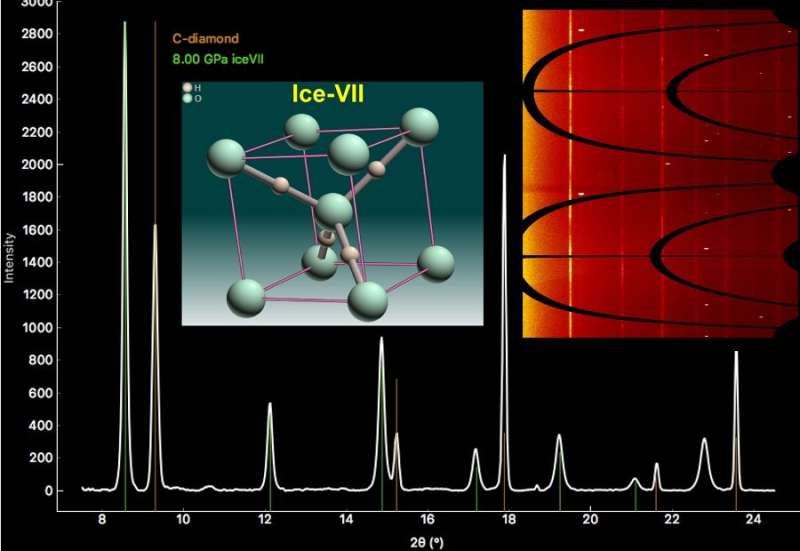March 9, 2018 report
Diamond inclusions suggest free flowing water at boundary between upper and lower mantle

A team of researchers from the U.S., China and Canada has found evidence in diamonds of free-flowing water in the boundary between Earth's upper and lower mantle. In their paper published in the journal Science, the group describes analyzing inclusions in diamonds spewed from volcanoes and what they found.
The researchers were looking for molecular forms of carbon dioxide as part of carbon cycling in the Earth's mantle when they came across evidence of something else. They had collected diamonds spewed from volcanoes (or pushed to the surface by other geologic activity) in Zaire, China, Sierra Leone and other locations in southern Africa, and were studying them by bouncing X-rays off the diamonds' inclusions, when they came across samples of ice VII—a form of ice that does not occur naturally at the surface. The find was significant, because ice VII forms at very high pressure—approximately the amount of pressure found at depths of 610 to 800 kilometers beneath the Earth's surface. This, the team notes, suggests that water must have been freely flowing at such depths to form the inclusions they observed. Such depths, they further note, fall into the transition zone in the mantle, a part of the Earth's interior that is still a source of mystery.
Prior research has shown that the mantle is made up mostly of hot rock under a lot of pressure. It has a lower layer, closest to the core, a transition layer, and an upper layer that eventually meets the crust. Prior research has also shown that the upper mantle has some water, which hints that there may also be water in the transition layer. The diamonds the researchers were studying would have been encased in liquid somewhere in the transition zone. The high temperatures there would not have allowed them to crystallize, however—it was only as they moved to the surface that crystallization would have occurred. The high pressure would have been maintained inside the diamond, but the temperature would have dropped dramatically.
The idea of water moving around in the transition layer is intriguing, the team reports, because it has implications for tectonic plate shifting.
More information: O. Tschauner et al. Ice-VII inclusions in diamonds: Evidence for aqueous fluid in Earth's deep mantle, Science (2018). DOI: 10.1126/science.aao3030
Abstract
Water-rich regions in Earth's deeper mantle are suspected to play a key role in the global water budget and the mobility of heat-generating elements. We show that ice-VII occurs as inclusions in natural diamond and serves as an indicator for such water-rich regions. Ice-VII, the residue of aqueous fluid present during growth of diamond, crystallizes upon ascent of the host diamonds but remains at pressures as high as 24 gigapascals; it is now recognized as a mineral by the International Mineralogical Association. In particular, ice-VII in diamonds points toward fluid-rich locations in the upper transition zone and around the 660-kilometer boundary.
Journal information: Science
© 2018 Phys.org




















